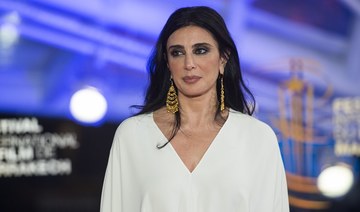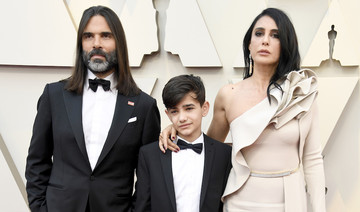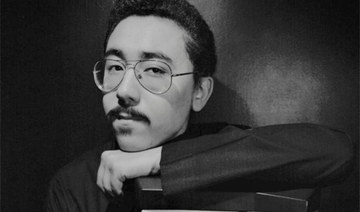DUBAI: The success that Lebanese director Nadine Labaki’s third film, “Capernaum,” continues to find across the world is astounding — even to her. Just one year ago, “Capernaum” won the Jury Prize at the Cannes Film Festival — a jury chaired by Cate Blanchett — after a 15-minute standing ovation. The film went on to be nominated for both a Golden Globe and an Academy Award for Best Foreign Film, with Labaki becoming the first woman from the Arab world to receive that honor. Now, perhaps most surprisingly, “Capernaum” has become an unexpected blockbuster in China, reportedly grossing $44 million in just over two weeks.
“It’s crazy! I can’t believe it! I really can’t. Why there? It’s all very new, so I still don’t know what it means exactly, but we’re soon going to find out,” Labaki tells Arab News in Cannes.
With its success in China, along with the US, Middle East and across Europe, “Capernaum” has reportedly become the highest grossing Arabic-language film in history.
“There’s been rumors going on for the past two to three days, and it’s like, ‘What?’ I still can’t believe it. It’s living proof that an Arab film with no actors can actually be a box office hit — can actually return money, make money for investors. You know how much we’re struggling in the Arab world to make films, find money, find funding, find investment. Especially for a Lebanese film,” Labaki says.
Labaki was in China just one month ago to show the film at the Beijing International Film Festival, and although the film got a rousing response in the room, she didn’t feel the reaction was any stronger than anywhere else the film has shown.
“Maybe it’s because there’s more than a billion people in China, but even the distributor is saying it’s working like any big blockbuster movie,” says Labaki.
The Chinese release of the film has one major difference from other cuts. The original version of the film tells the story of a young boy named Zain El Hajj (played by Zain Al-Rafeea) struggling to survive on the streets of Lebanon with the help of a young Ethiopian immigrant named Rahil and her undocumented infant son Yonas, dreaming of escaping as a refugee to Sweden. The story is not far from Al-Rafeea’s real-life situation at the time — he is a Syrian refugee. Since the film’s release, though, Al-Rafeea and his family have been relocated to Norway, something the Chinese release includes at the end of the film as a short visual report.
“The film ends on his smile, and in a way there’s (now) a continuation of real life in that story. This is really happening, it’s not made up,” says Labaki. “That’s why we’re making a documentary around the film. Maybe it’s a way of comforting people, knowing that he’s alright, he’s good, he’s in a better place. Deep down, people know this kid is going through this in his real life, they know he’s not just an actor in this film.
“I think it’s comforting to know Zain is in a different place now. He’s travelled. He was dreaming of going to Sweden the whole time, and now he’s really in Norway. He has a new life, a new beginning, a new house. He’s going to school, all his family is with him,” she continues. “It’s a complete shift of destiny. Maybe the fact the distributor added this report after the film made people understand that this is a real story and a real struggle, and not just another film.”
Though this is a huge moment for Arab film in general, Labaki doesn’t believe that the success of “Capernaum” necessarily signals a greater appetite for Arab cinema worldwide.
“I don’t think it’s about (where the film comes from). It’s about good films. It has nothing to do with the identity of the film or the country it’s coming from, really. It doesn’t mean if this film worked in China that another Arab film will work in China,” she says. “Maybe there’s going to be more hope for Lebanese cinema in the sense that investors will be less afraid to invest in Lebanese films, but it’s about the script, the filmmaker, the craft, the know-how. This is what gives confidence to somebody.”
Speaking to Arab News at the renowned Hotel Barrière Le Majestic Cannes on one of the busiest days of the film festival, Labaki is currently serving as the president of the Un Certain Regard jury, the first Arab to do so. Labaki began her relationship with Cannes in 2004, writing and developing her first feature, “Caramel,” at the Cinéfoundation Residency before showcasing the film at the Director’s Fortnight in 2007. Both of Labaki’s subsequent films — “Where do We Go Now?” in 2011 and “Capernaum” in 2018 — debuted at the festival, each in increasingly competitive categories.
“I feel like I’m their baby, in a way. With a baby you start watching their first steps, see them grow, protect them, push them… They’ve accompanied me in this journey, and recognized and encouraged me. It’s great — I really love this festival. I think it’s the best festival in the world. I like the integrity they have towards cinema. You feel that watching a film in Cannes, you know that you’re not going to watch just anything — there’s something in there for you to learn from, to be surprised by, to be in awe of. There’s always something about films that are shown in Cannes,” says Labaki.
In approaching her role as head of the jury, Labaki is focusing on connecting with the films, and taking on the perspective of myriad filmmakers from across the world.
“I don’t watch films as a filmmaker. Never,” she says. “I watch the film as a human being… I don’t like the word jury. I don’t like to judge because I’ve been there — I’m there all the time. I’ve been in those very difficult situations, very fragile situations, where you’re making a film, where you’re doubting, where you don’t know, where you don’t have enough distance with what you’re doing, and you don’t have the right answers and you’re not taking the right decisions.”
Just as her own films have become increasingly focused on the problems facing Lebanese society, Labaki believes that contemporary film cannot help but be political, and must accept its role as a commentary on the world we live in — something that she feels she’s seen in the films in her category.
“Cinema is not just about making another film; it’s about saying something about the state of the world right now. Until now, every film we’ve seen is (doing that). That doesn’t mean that cinema that is just art for art’s sake is not good — there are so many different schools — but I feel we’re becoming so much more responsible for this act,” she says. “You become an activist without even knowing you’re becoming an activist, and saying something about the state of the world. It’s important.”
INTERVIEW: Lebanese filmmaker Nadine Labaki on heading a Cannes jury and the surprise success of 'Capernaum' in China
INTERVIEW: Lebanese filmmaker Nadine Labaki on heading a Cannes jury and the surprise success of 'Capernaum' in China
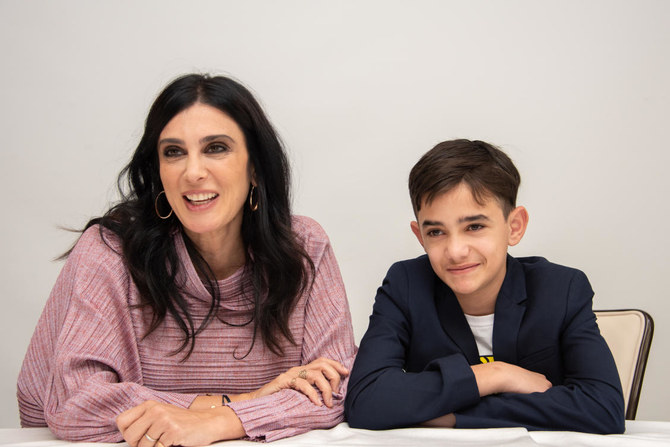
- Labaki is currently serving as the president of the Un Certain Regard jury, the first Arab to do so
- “Capernaum” has become an unexpected blockbuster in China, reportedly grossing $44 million in just over two weeks
REVIEW: ‘Returnal’ — a thoughtful and challenging sci-fi adventure
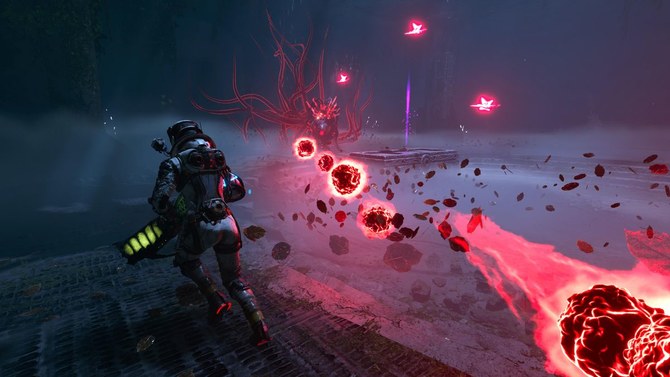
LONDON: Right from the start, before you even take control of Selene Vassos, a reconnaissance scout who has crash landed on a prohibited and mysterious planet, you are warned that “Returnal” (available originally for PS5 but now PC too) is “intended to be a challenging experience.” Such difficulty may deter the casual gamer used to a steady progression of character and exploration through a games environment. However, “Returnal” is a thoughtful and rewarding adventure that lays claim to much originality of thought in its set up. The key theme is that when you die, you return! But not to the same environment that you were in before. Instead, each new cycle postures new challenges and progress can only be made by unlocking upgrades that allow you to make more meta progress in Selene’s journey.
Selene herself is a super professional, unfazed character who doesn’t appear too bothered when she comes across a body of her former self that died in this strange world where the laws of physics and time appear not to apply. Staying alive is obviously crucial, particularly as it allows her to retain better weapons for longer. In addition, avoiding damage allows for boosts of agility, vision and more, making for a more lethal Selene. The environment is varied and surprising with each incarnation and the weapons on offer come complete with a range of exciting alternative fire mechanisms such as homing missiles or laser-like items. A hostile environment where even plants are a threat to life is mitigated by your technology, the core of which you can improve despite the reset of deaths, through fancy smart “xeno-tech” that becomes integrated with alien kit left around.
There is a paradox in “Returnal” described by Selene herself that she is trapped in an environment that is “always the same, always changing,” which literally makes no sense. Players have to be patient in the early chapters getting used to the sapping dynamic of death and return. Once that makes more sense, the loneliness of both her alien environment and the impossibility of even dying to escape it make for a pretty special atmosphere that a smart shooting engine then complements.
Artist Abdullah Al-Saadi represents the UAE at Venice Biennale
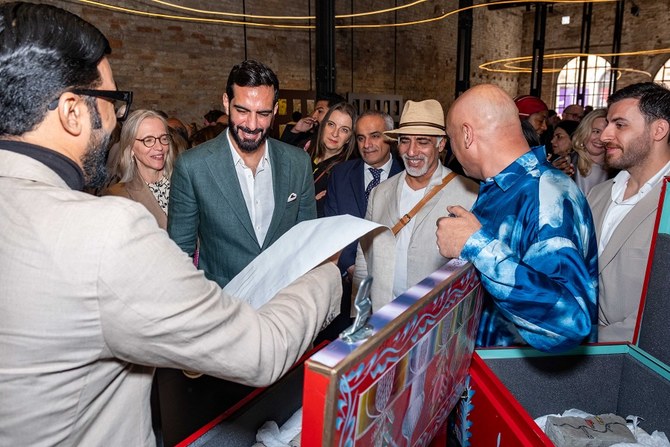
VENICE: Emirati conceptual artist Abdullah Al-Saadi is representing the UAE at the 60th Venice Biennale, curated this year by Adriano Pedrosa under the theme of “Foreigners Everywhere. Stranieri Ovunque.” The pavilion’s exhibition, which opened on April 20 and runs until Nov. 24, was curated by Tarek Abou El-Fetouh.
Al-Saadi has played a pivotal role in the development of the UAE’s evolving art scene — his multidisciplinary practice includes the mediums of painting, drawing, sculpture, performance and photography, as well as collecting and cataloguing found objects and the creation of new alphabets.
“Since I was a student, four decades ago, art has been an integral part of my daily life,” Al-Saadi said in a statement. “My art is the result of interactions with places, people, ideas, and aesthetics that I encounter every day where I live and in my journeys. I find myself driven to document these experiences visually or in written diaries and contemplations, seeking to transfigure the ordinary with the passage of time.”
“I am representing myself in Venice as an artist foremost and then as a local Emirati artist,” Al-Saadi told Arab News. “This pavilion will showcase my artistic journey over a long period of time since after university through eight works, two of which are new commissions,” he said of the ongoing show titled “Abdullah Al-Saadi: Sites of Memory, Sites of Amnesia.”
One of the artistic journeys he made that will serve as a new artwork took place amid the Arabian landscape.
“I spent seven days in the valley studying the tea, the coffee, and bread,” Al-Saadi explained to Arab News. “Then after one week I rode my bicycle, and I went to the mountains. During that time, I was reading a book on the Silk Road and trying to imagine how it was to travel on the Silk Road and I compared my way of traveling with how it was to travel on the Silk Road long ago.”
“Abdullah’s work is comprised of multiple aspects, from his diaries to sketches, to landscapes, scrolls and other objects that he creates,” Laila Binbrek, Director of the National Pavillion UAE, explained to Arab News. “They all stem from his diary — a diary he has been keeping for the last 40 years. Every day he writes in his diary.”
Christie’s Art of the Islamic and Indian Worlds auction highlights rare finds in London
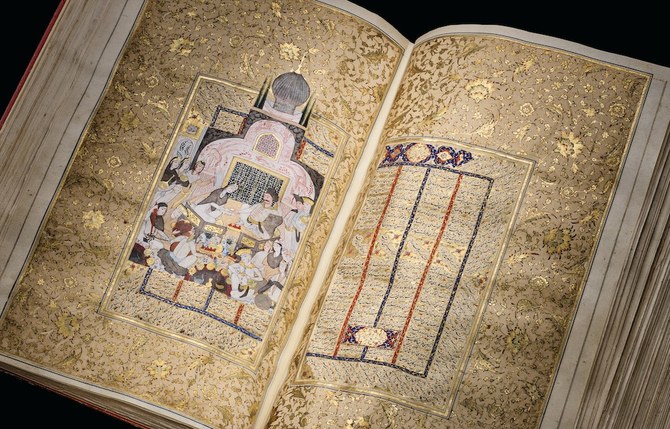
LONDON: Christie’s Art of the Islamic and Indian Worlds spring sale will see 261 lots —including paintings, ceramics, metal work, works on paper, textiles, rugs and carpets — go under the hammer at a live auction at their London headquarters on April 25.
Arab News was given an exclusive viewing of some of the works prior to their public pre-sale showing from April 21-24.
Sara Plumbly, Christie’s Head of Department for Islamic and Indian Art, gave her expert insights into some selected pieces.
These included lot 45, an exquisite miniature octagonal Qur’an, dated AH 985/1577-8 AD, which was made in Madinah, the Qur’an has an estimate of $13,000-19,000.
“We very rarely see manuscripts that were copied in the holy cities. So this being copied in Madinah makes it very rare,” she explained.
“It has a Naskh script. This a very steady, cursive script which is relatively easy to read — unlike some of the others. For example, Nastaliq script, which is copied on the diagonal, is much trickier to read. For Qur’ans you would almost always see a Naskh script for ease of reading. Nastaliq is usually reserved for poetic manuscripts,” she said.
This miniature Qur’an would be small enough to carry with the owner on a daily basis, usually around the neck. Alternatively, they would be hung in their silver boxes on an ‘alam (standard or flag) and carried into battle.
Plumbly, who completed her master’s degree in Islamic Art and Archaeology at the University of Oxford, has lived and travelled extensively across the Middle East and North Africa, including extended periods in Egypt, Syria, Lebanon, Saudi Arabia and Sudan.
Another stunning item in the sale is a Watercolor Album depicting a selection of known prestigious and rare Iznik ceramics from the Louis Huth collection. It comprises 44 single and double-page watercolor paintings of Iznik bowls, flasks, ewers and dishes.
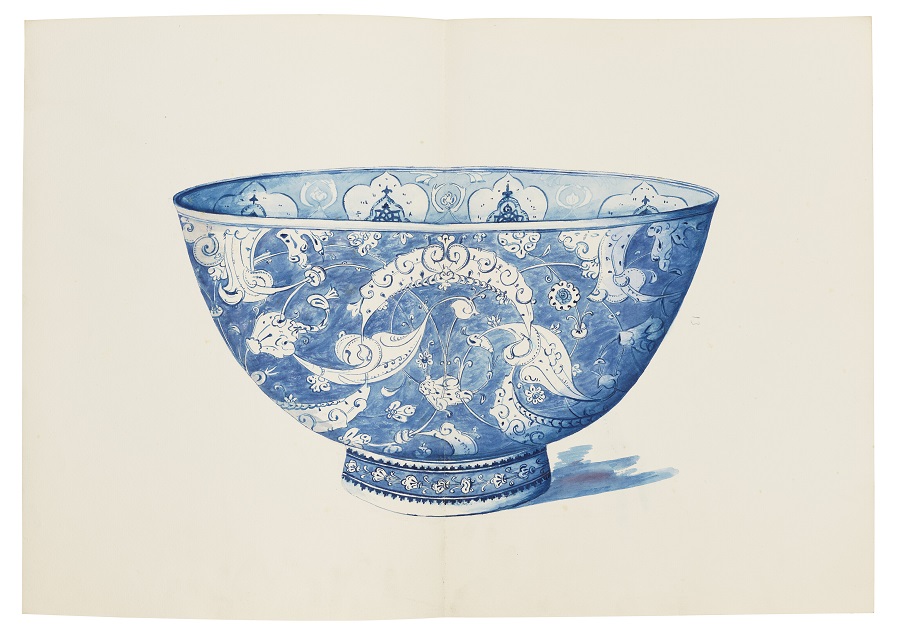
It was also fascinating to see a rare and complete illustrated manuscript copy of the Khamsa of Nizami by 12th century Persian poet Nizami Ganjavi, together with the Khamsa of Amir Khusraw Dihlavi, a 13th century Persian Sufi singer, musician, poet and scholar. The colors in the illuminations leap off the pages as though created yesterday.
Plumbly also pointed out the exceptional workmanship of an early 13th century Kashan pottery bowl, excavated in Iran’s Kashan in 1934.
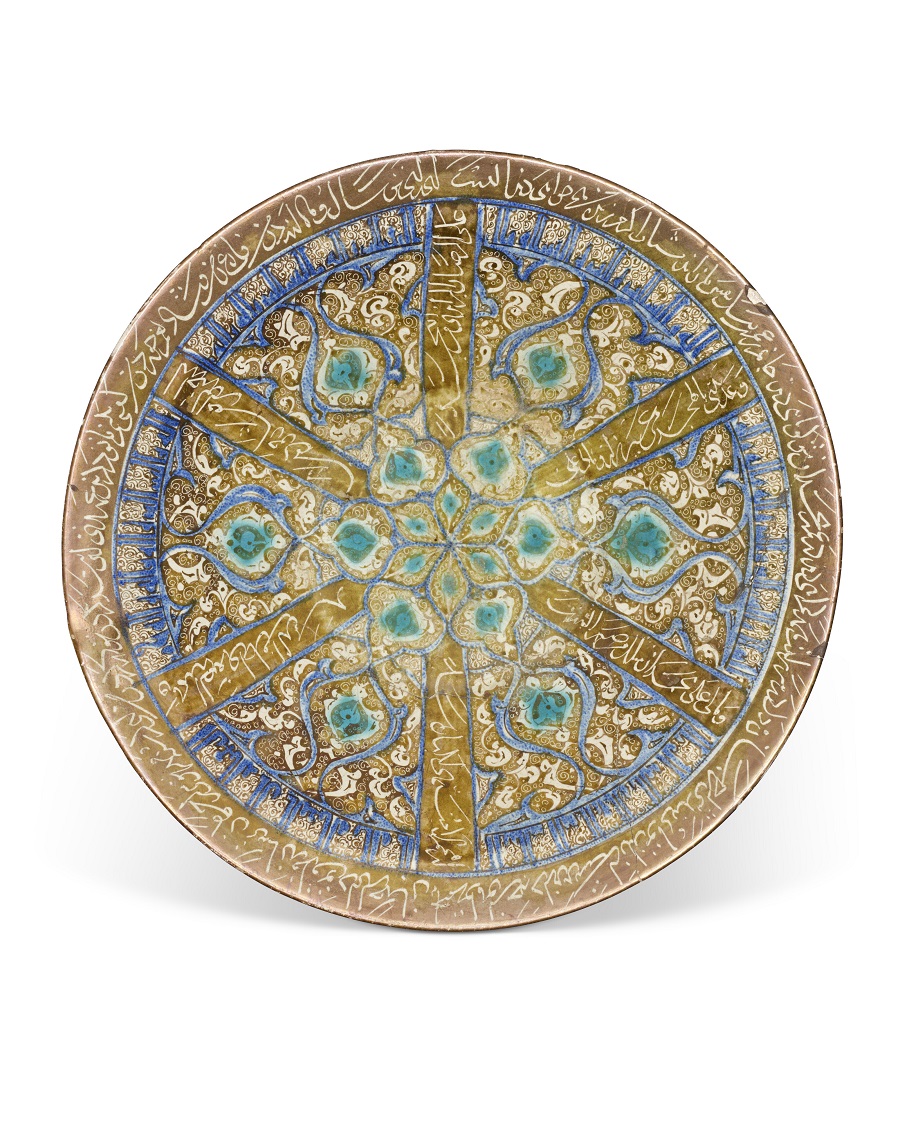
“This type of Kashan ceramics have a wonderful luster. It’s a very difficult technique to perfect. This bowl has a really beautiful dark gold color which is very well controlled. The condition is remarkable. It’s one of those ‘best of type’ objects,” Plumbly observed.
Merwas — Riyadh’s beating heart of creativity
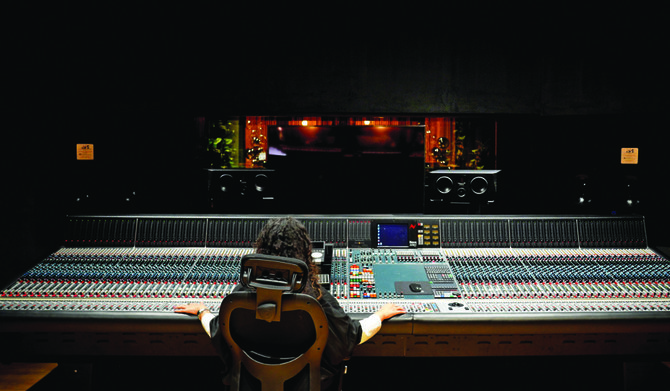
- World’s largest music production studio is nurturing Saudi talent, streamlining local industry
RIYADH: Riyadh’s Merwas, considered the biggest art and entertainment factory globally, is proving to be one of Saudi Arabia’s greatest music industry assets.
Nada Al-Tuwaijri, co-founder and CEO of Merwas, told Arab News that the facility, which holds the Guinness World Record for the largest music production studio, “is home to all artists.”
She added: “The methodology behind it is to create solutions through the subsidiaries, and invest in both talent and infrastructure.
“Alongside it being a one-stop shop for all content creators, we strive to take our local talents from local to global and create a unique stamp in the industry.”
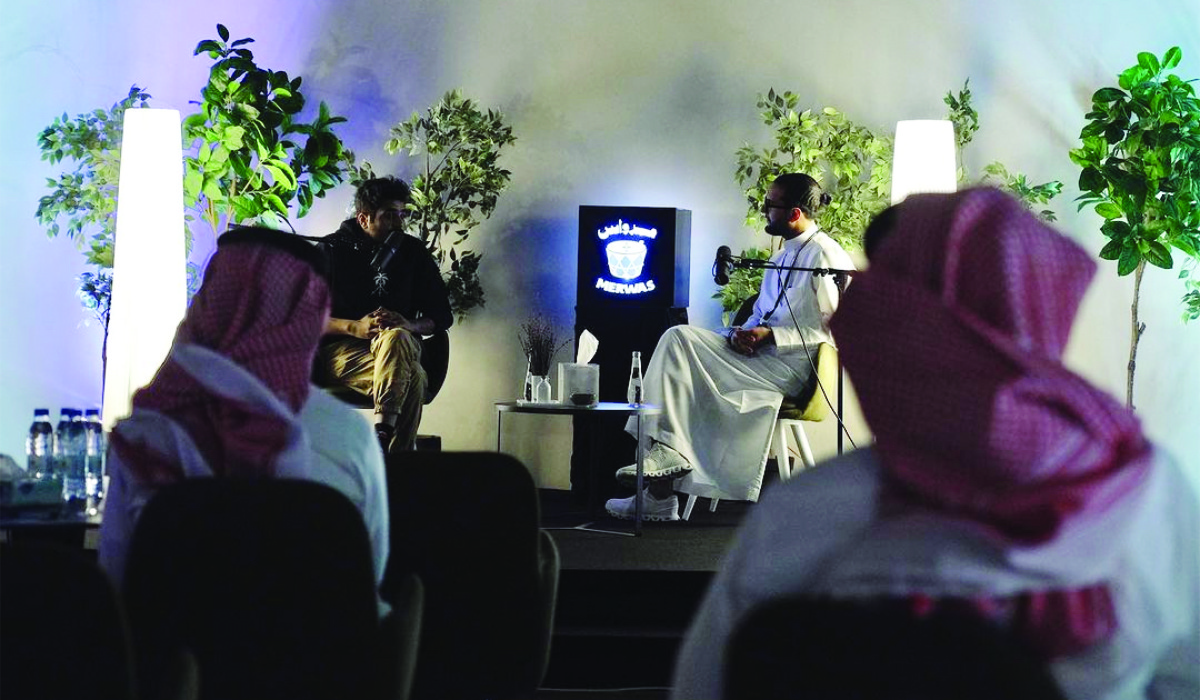
The entertainment zone and audiovisual production studio, located in Boulevard Riyadh City, houses 22 main studios alongside its academy.
Some of the top musicians in the world have visited Merwas since it opened in 2022. These include DJ Khaled, the acclaimed Saudi singer Rabeh Saqer, and the Emirati singer Ahlam. Afrojack, a world-renowned Dutch DJ and producer, also led an electronic music boot camp to nurture local talent and inspire a new generation of Saudi artists.
HIGHLIGHTS
• Merwas, located in Boulevard Riyadh City, houses 22 main studios alongside its academy.
• The academy’s classes offer local creatives and artists direct access to seasoned expertise.
• The Earth Sound Studio, or ESS, named after the late Saudi composer Talal Maddah.
Spread across almost 5,000 square meters, the culture factory fosters creativity, collaboration, and the production of multimedia content, while providing artists with access to top-tier services, facilities and industry expertise.

The Earth Sound Studio, or ESS, named after the late Saudi composer Talal Maddah, features state-of-the-art technology, such as the SSL console, which is used to create depth on music tracks and ensures the true soul of the artist’s voice is protected.
This live recording space is booked almost every day by various artists, and has been used by some of the Arab region’s biggest stars.
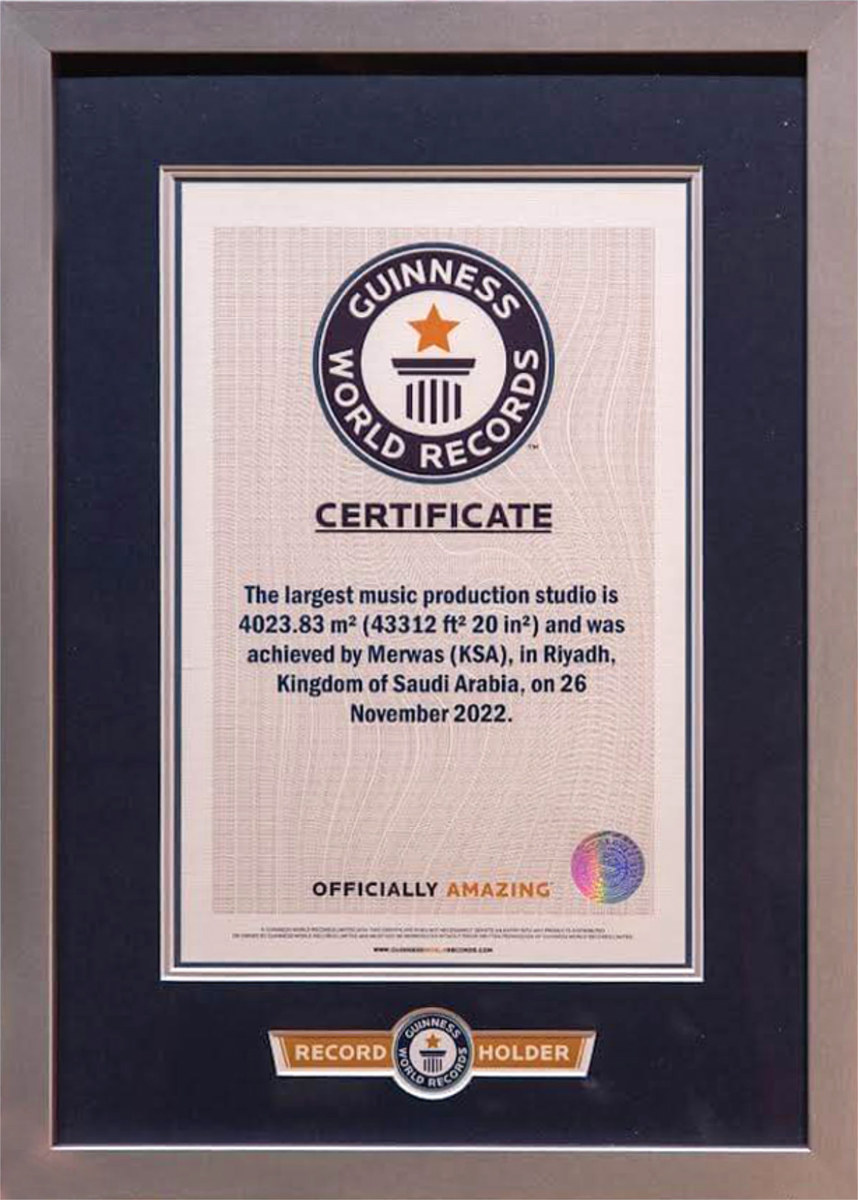
One of the only five Neve consoles in the world can be found in the Neve Studio. The panel is known for its high-quality sound and warmth, and is ideal for music recording, vocal tracking, and mixing for exceptional audio quality.
Its live studio can accommodate over 120 orchestra members and their instruments to provide a unique recording experience.
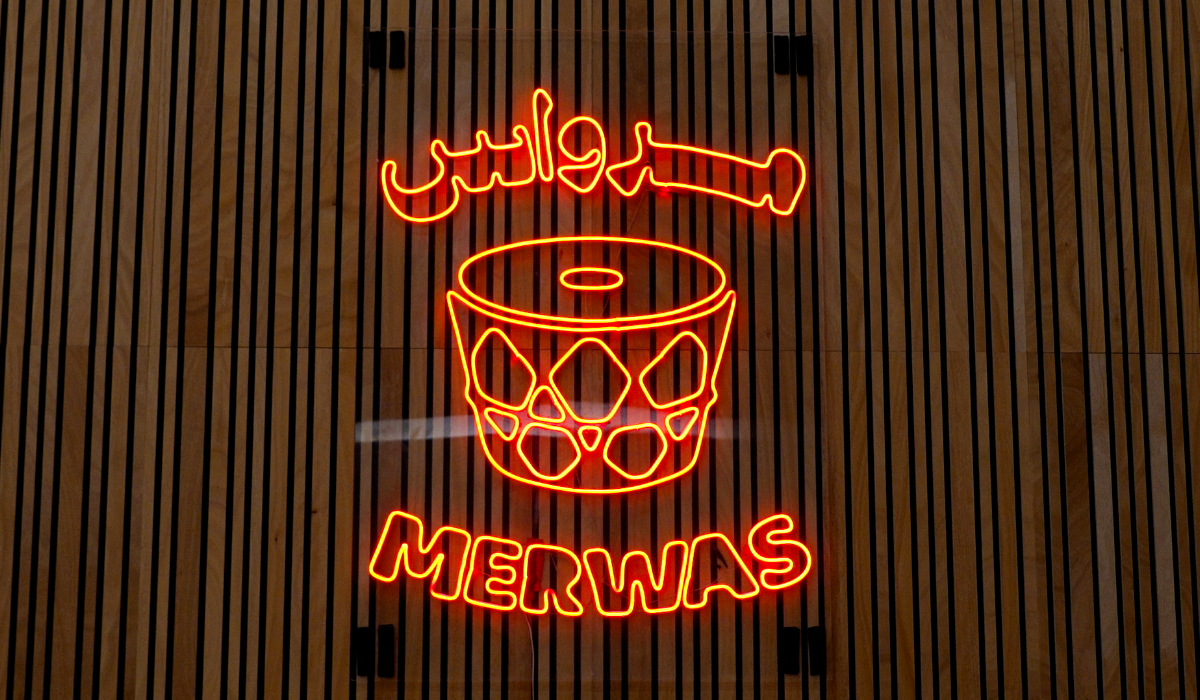
Specifically designed for electronic music production, the EMP Suite is a DJ’s dream, with cutting edge synthesizers and digital audio workstations ensuring an artist leaves the room with a fully produced track.
Merwas is also home to three production suites, designed for content creators who require a comfortable and professional environment for music production, editing, and mixing. Each suite is equipped with industry-standard gear, software, and acoustics to support a wide range of projects.
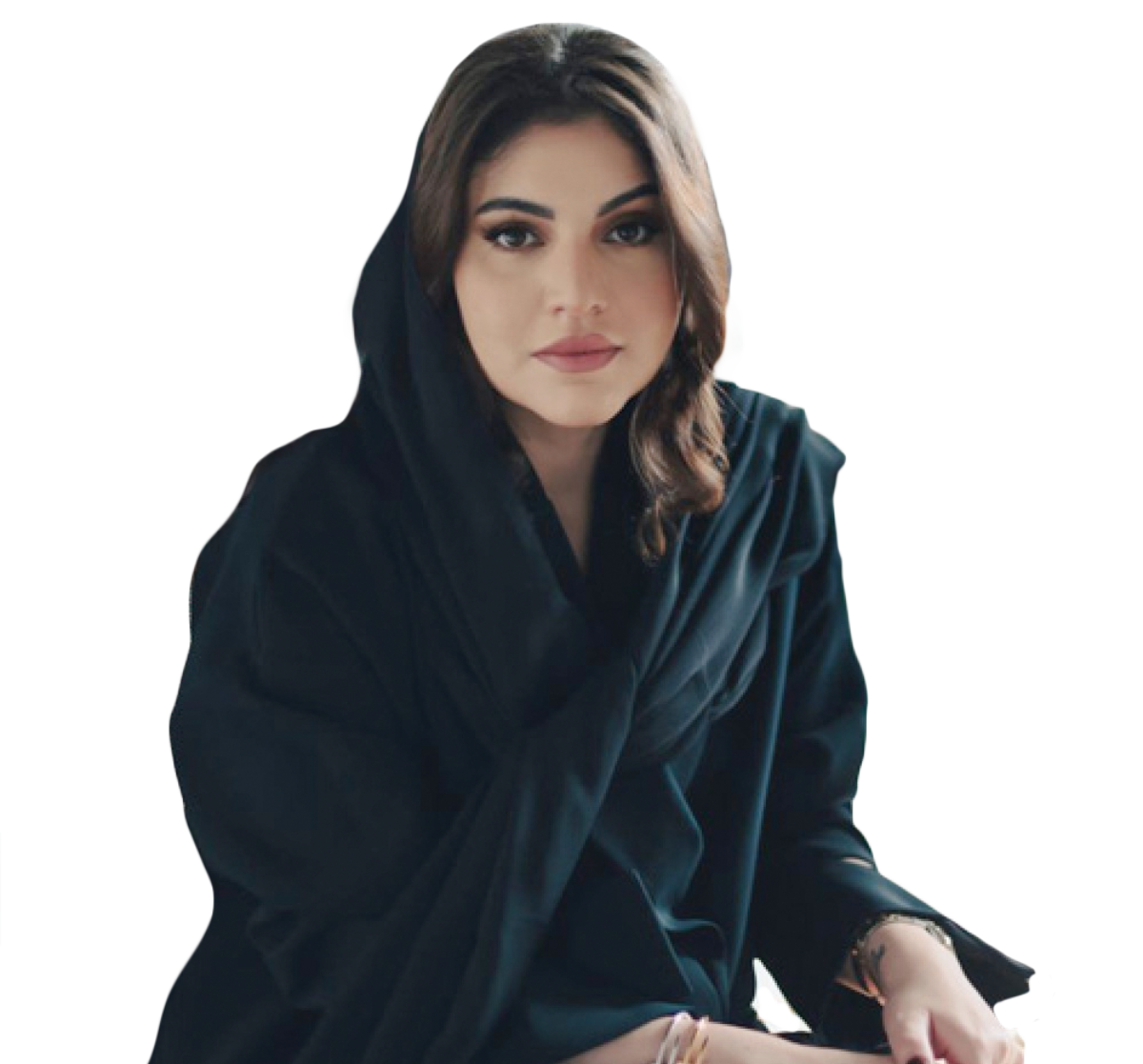
The studio also provides private rehearsal spaces to ensure Saudi talents are nourished to their full potential. The versatile space is designed for musicians, performers, and other artists to rehearse and refine their craft within a comfortable environment with access to instruments and equipment.
Part of the charm of recording studios is the live jam sessions that have given birth to some of the most iconic records to date. Merwas’ Band Live/Control Room also captures the spontaneity of live performance within its soundproof walls.
Alongside (Merwas) being a one-stop shop for all content creators, we strive to take our local talents from local to global and create a unique stamp in the industry.
Nada Al-Tuwaijri, Merwas cofounder and CEO
Championing audiovisual pursuits, the studio has made space for high-quality podcasts and videos to come to life.
The podcast suite and FM radio recording spaces are tailored to immerse listeners with unbeatable audio clarity, while the 25-meter-long Green Screen room helps ideas come to life, whether commercial, film, or music video.

Material can then be edited at the color-grading suite, which is essentially a small theater with 4K projector. Producers, directors, writers, and engineers gather here to put the final visual touches on video projects through its DaVinci color grading software and hardware.
Academy Classes offers local creatives and artists direct access to seasoned expertise. These feature advanced stations for sound production, engineering, and technical programs, with everything necessary for a basic understanding and training of music production.
The studio hosts workshops, networking sessions, and community events in an effort to flourish the music industry locally while making it a magnet for international talent. Anyone can be a part of this community by booking a suite or signing up for a workshop on their website merwas.sa.
Merwas has positioned itself at the the forefront of the entertainment industry being the first of its kind in the MENA region. In less than a year since its launch, it has already became a hotspot for musicians across the globe to visit and utilize its services, from rising talents to international A-listers.
Founded by Al-Tuwaijri and Chief Content Officer Rumian Al-Rumayyan in partnership with Sela, Merwas treasures Saudi creativity and is a vital part of building an ecosystem and community for local artists.
Their partnership with the Saudi Authority for Intellectual Property has set a new focus on preserving the rights of local creatives, pillared by the aim to enrich the culture of the Kingdom while empowering its citizens and their creativity in an environment of abundant knowledge, education in culture, art, entertainment and music.
Hollywood Arab Film Festival: Showcasing Arab cinema in Los Angeles
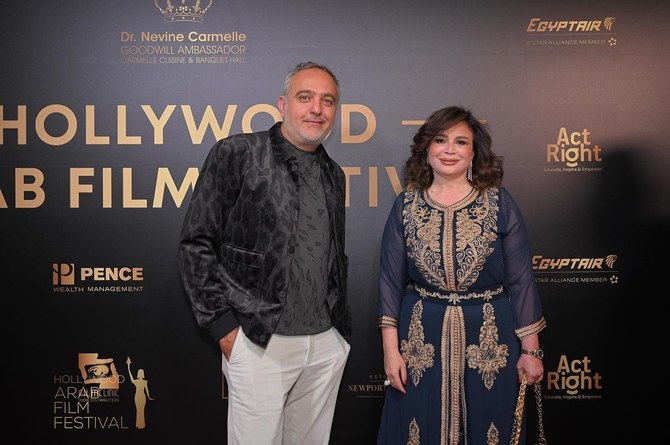
LOS ANGELES: The third annual Hollywood Arab Film Festival began this week, bringing the best of 2024’s Arab cinema to Los Angeles and giving fans a chance to see the films in theaters as well as introducing a new audience to the Arab world’s top talent.
The event, which runs until April 21, was attended by a number of celebrity guests including Egyptian producer and screenwriter Mohamed Hefzy, Tunisian actor Dhaffer L’Abidine, renowned Egyptian star Elham Shahin and Egyptian producer Tarek El-Ganainy.
At the event, Hefty said: “Arab cinema really needs a platform to tell our stories and to show who we are, our identity, our hopes and dreams, our pains, and all the different social topics that are tackled in some of the films that are being presented are maybe more relevant today than ever. So I think it’s a great opportunity to have this dialogue.”
Hefzy’s film “Hajjan” was showing at the event. It is a Saudi Arabia-based film directed by Egyptian filmmaker Abu Bakr Shawky.
“Hajjan is a film about a young boy who got a very special connection to his camel, who has a brother who was a camel jockey and races,” Hefzy said. “And, one day when something really unexpected happens to his brother, and shatters his world, it forces him to step into his brother’s shoes and become a camel jockey, and so starts racing himself.”
The movie is a co-production between the Kingdom’s King Abdulaziz Center for World Culture, or Ithra, and Hefzy’s Film Clinic.
“It was a film made in Saudi Arabia with Saudi talents and actors with an Egyptian director, but with the Saudi co-writer and Saudi actors and shot mostly in Saudi Arabia,” Hefzy said. “So I think it’s, it was a great experience, and learned a lot about Saudi Arabia, learned a lot about the culture.”
The festival featured cinema from various Arab countries, presenting films from 16 different nations. Marlin Soliman, strategic planning director of HAFF, highlighted the inclusion of six feature films, ten short films and six student films.
Spanning five days, HAFF offered its audience a vibrant experience, including a red-carpet affair, panel discussions on filmmaking and diversity in Hollywood, and, of course, screenings of high-profile films.
The festival also saw several filmmakers singing the praises of Saudi Arabia’s expanding film industry.
L’Abidine, the writer and director of “To My Son,” said: “I’m thrilled to be back again with my second feature film ‘To My Son,’ a Saudi film… I think there is a great evolution of Saudi cinema that’s been happening in the last few years.”




